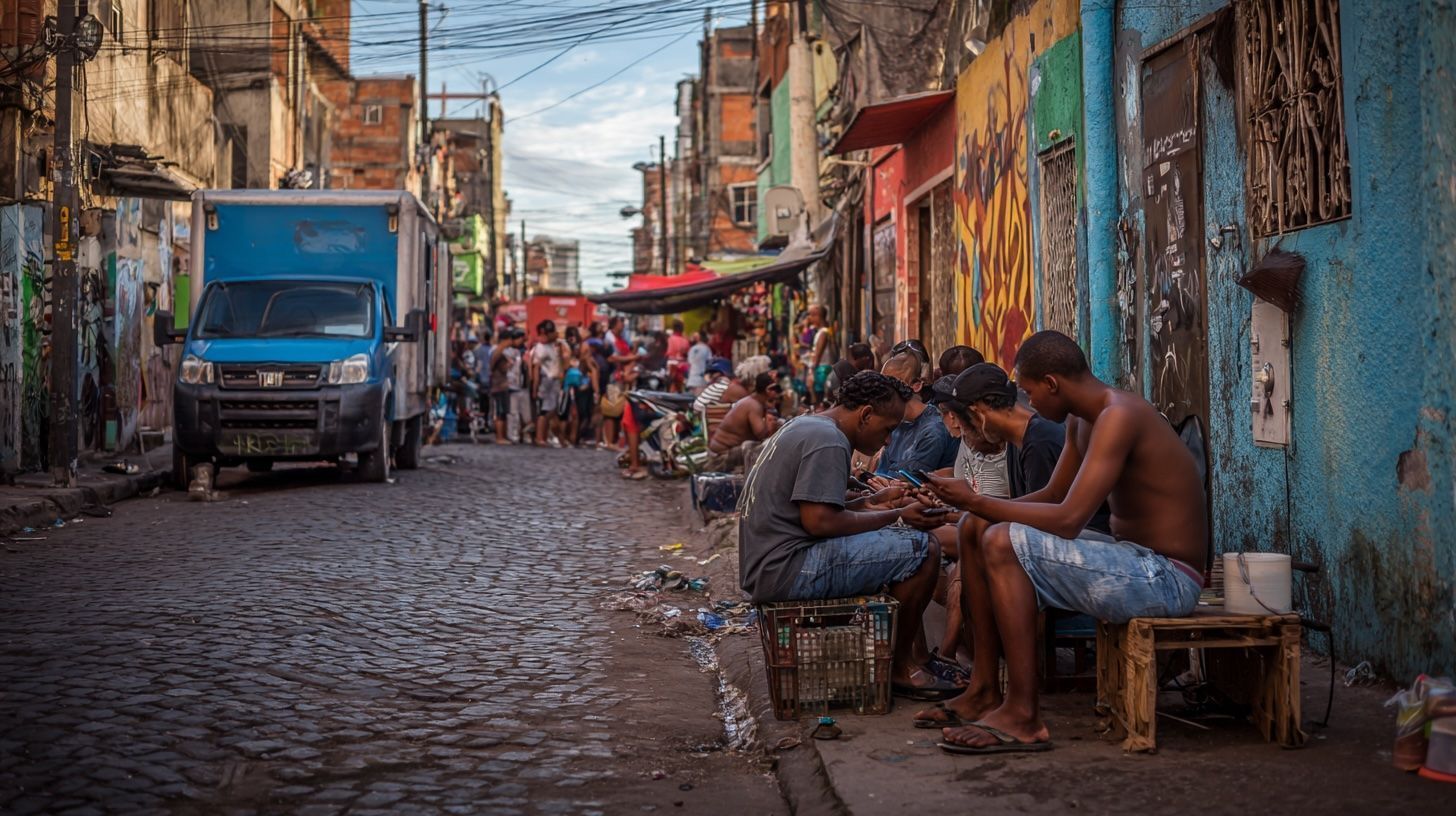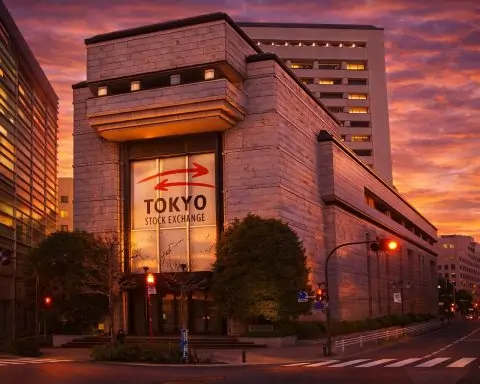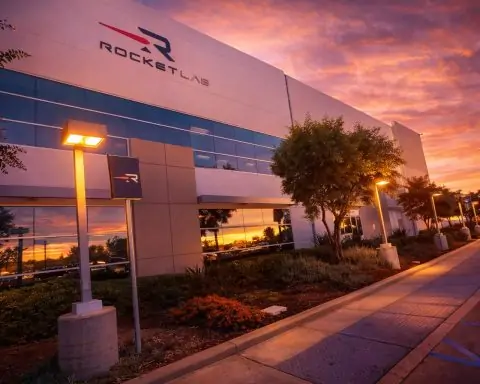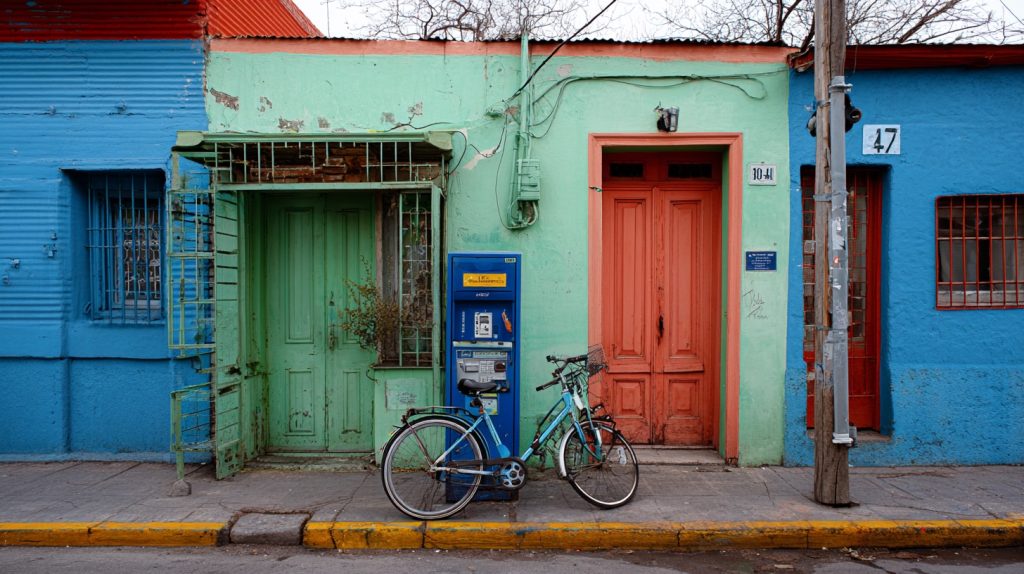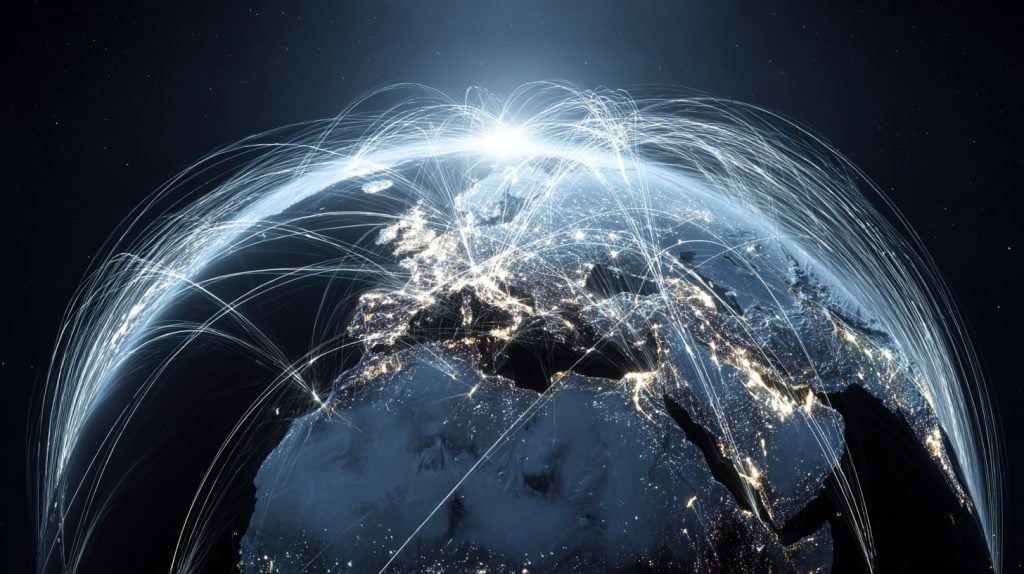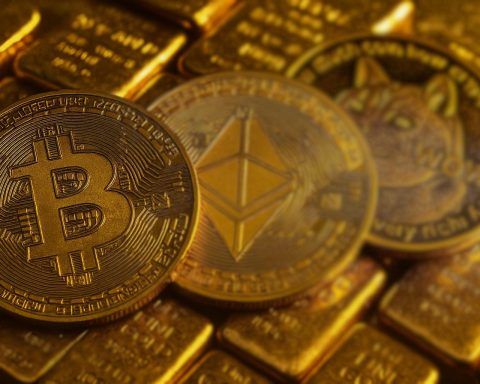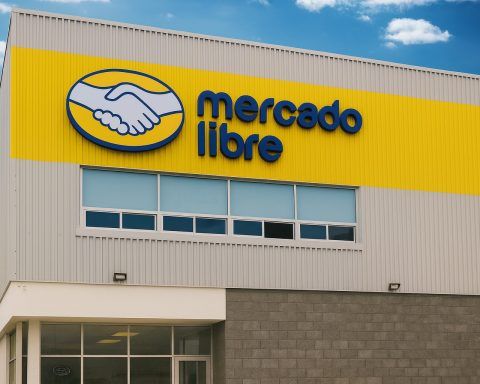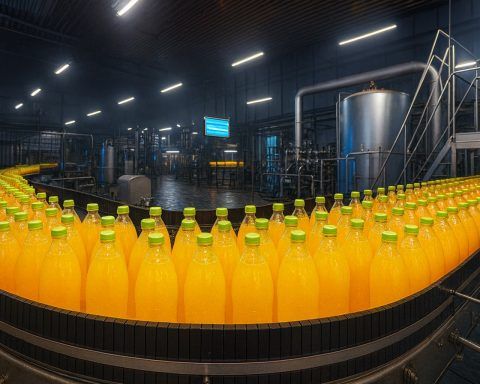- As of 2023, about 88% of Brazilians aged 10 or older used the internet, equal to roughly 164 million people.
- In 2023, about 92.5% of Brazilian households had internet access.
- Regional disparities exist, with the Central-West around 91% online in 2023 while the North and Northeast hovered around 85%.
- Fiber-to-the-home (FTTH) has surged, and by late 2024 fiber accounted for about 77% of fixed broadband subscriptions, with about 41.3 million fiber connections out of roughly 53 million fixed lines.
- 4G coverage is virtually universal, with 4G available in all 5,570 municipalities and over 98% of the population covered.
- The November 2021 5G spectrum auction raised BRL 47.2 billion, and by September 2023 Anatel approved 5G transmissions in 2,456 municipalities covering about 156 million people (73%).
- In fixed broadband, no single provider had more than about 20% share in 2023, with Vivo and Claro among leading fixed subscribers.
- Starlink entered Brazil in 2022 and, by the end of 2024, had nearly 300,000 subscribers.
- Urban-rural connectivity gaps persist, with 2023 urban households online at 94.1% and rural households at 81.0%.
- As of 2023, 97.6% of private school students and 89.1% of public school students in Brazil used the internet.
Introduction
Internet connectivity in Brazil has grown tremendously over the past decade, transforming how Brazilians communicate, learn, and do business. Yet, beneath impressive national statistics lies a nuanced digital divide – gaps between rich and poor, urban and rural, and between well-connected regions and those still struggling for basic access. This report provides a comprehensive overview of internet access in Brazil, examining penetration rates, infrastructure developments (fiber, mobile broadband, satellite), urban-rural disparities, key telecom players, government connectivity programs, affordability issues, and emerging trends. The goal is to unpack “the real story” behind Brazil’s connectivity landscape – highlighting both the achievements in closing the gap and the challenges that remain in the race to connect everyone.
Internet Penetration Across Brazil: National and Regional Overview
Broadly speaking, Brazil has achieved a high level of internet penetration. As of 2023, approximately 88% of Brazilians aged 10 or older use the internet, up from just 66% in 2016 [1]. In absolute terms, that equates to about 164 million internet users (out of an estimated 187 million in that age group) [2]. At the household level, internet access is nearing ubiquity – 92.5% of Brazilian households had internet in 2023, a figure that has inched closer to universal coverage each year [3]. By comparison, in 2019 only about 74% of the population used the internet, underscoring the rapid growth in recent years [4]. The expansion of mobile phones and affordable data plans has been a major driver, with 98.8% of users accessing the internet via mobile devices as of 2023 [5].
However, these national averages mask significant regional disparities. Connectivity rates vary between Brazil’s five major regions – the more developed south and central regions enjoy higher internet access, while the poorer north and northeast lag behind. For instance, in 2023 the Central-West region (which includes the capital Brasília) boasted the highest share of residents online (around 91% of people over 10), whereas the North and Northeast regions had the lowest (only about 85% of people) [6]. The Southeast and South – home to Brazil’s largest cities – fall in between, with roughly 88–90% of people online. This pattern reflects broader socioeconomic differences: regions with higher income and urbanization have better connectivity, whereas the Amazonian North and the Northeast (historically Brazil’s poorest region) face greater challenges in access and infrastructure.
Figure: Percentage of households with internet access by region (2023). The more developed Central-West, Southeast, and South approach universal coverage, while the North and Northeast lag slightly behind. [7] [8]
Data on household internet access similarly show the gap. In Brazil’s wealthier regions (Central-West, Southeast, South), about 93–95% of households are connected, compared to about 89–90% in the North and Northeast [9]. In other words, virtually every urban household in São Paulo or Brasília has internet, but in a rural village in the Amazon or a remote town in the Northeast, roughly 1 in 10 households still remains offline. Overall, some 5.9 million Brazilian households lacked internet as of 2023, and the top reasons reported were telling: about one-third of these households said no one knew how to use the internet, ~30% said the service was too expensive, and ~25% said they didn’t feel a need for internet [10]. These responses highlight that the digital divide is not only about network availability – education, digital literacy, and affordability are critical factors as well.
Encouragingly, the gap has been narrowing. The proportion of households with internet in Brazil has climbed from 69% in 2016 to 92.5% in 2023 [11]. Gains have been especially rapid in historically under-connected areas. For example, in the rural North and Northeast, internet use has more than doubled in the past few years as mobile coverage and government programs expanded into remote communities [12]. Back in 2016, only 34% of rural residents used the internet; by 2023, that figure reached 76.6% [13] – a remarkable jump that cut the rural-urban usage gap by two-thirds [14]. Similarly, the share of rural households with internet shot up from 35% in 2016 to 81% in 2023 [15]. Although regional disparities persist, every part of Brazil has seen improvements in connectivity, laying a stronger foundation to eventually achieve universal internet access.
Infrastructure Development: Fiber Optics, Broadband and Mobile Networks
Achieving near-universal internet access in a vast country of 215 million people is fundamentally an infrastructure story. Brazil’s telecom networks have undergone rapid development – from the spread of fiber-optic cables in cities and towns, to the rollout of 4G and now 5G mobile towers nationwide, to novel solutions like satellites for the most isolated areas. This section examines the state of Brazil’s internet infrastructure, broken down by fixed broadband (fiber, cable, etc.) and mobile broadband (4G/5G cellular networks).
Fiber and Fixed Broadband Expansion
On the fixed broadband front, Brazil has experienced nothing short of a fiber optics boom in recent years. Traditional broadband technologies like DSL (copper telephone lines) and coaxial cable are rapidly being overtaken by fiber-to-the-home (FTTH) deployments that offer faster speeds. As of late 2024, fiber connections account for about 77% of all fixed broadband subscriptions in Brazil, by far the dominant technology [16] [17]. This is a dramatic change from just a few years ago – fiber’s share was only ~24% across Latin America in 2019, but Brazil alone now counts roughly 41 million fiber broadband subscriptions out of ~53 million total fixed lines [18] [19]. In fact, Brazil is the largest fiber broadband market in the region; by Q3 2024 it had more fiber subscribers than any other Latin American country, representing nearly half of all fiber households in the region [20].
What drove this explosive growth in fiber? A combination of aggressive network investment and a highly competitive ISP market. Incumbent telecom companies like Telefônica (Vivo) and Oi (through its spun-off fiber unit V.tal) have laid thousands of kilometers of fiber and upgraded their networks, but much of the expansion has come from hundreds of small and regional internet providers. These independent ISPs have proliferated across Brazil’s interior, often deploying fiber in medium-sized cities and underserved areas faster than the big players. As a result, the fixed broadband market has become less concentrated – in 2023 the largest operator (Claro) had only a 20% share [21], and collectively, small/medium ISPs now serve over half of all fixed broadband subscriptions in Brazil [22]. According to regulatory data, smaller providers (termed “PPP” – pequenos provedores) account for ~67% of all fiber connections in the country, far outpacing the big carriers in FTTH reach [23]. This decentralized, competitive environment has helped push fiber into communities that previously languished with slow DSL or no service at all.
Figure: Technology mix of fixed broadband connections in Brazil (Oct 2024). Fiber-optic dominates, making up over three-quarters of subscriptions. Cable (coaxial) and other technologies (DSL, radio, satellite) constitute the remainder, as legacy networks phase out [24] [25].
Today, older broadband technologies are in clear retreat. DSL over copper phone lines – once the workhorse of internet in the 2000s – now represents only a few percent of connections, as most telcos have either migrated customers to fiber or lost them to competitors. Cable broadband (via coaxial TV cables) remains significant in a few urban areas (for example, Claro still serves ~8 million cable modem subscribers over its cable TV network) [26], but even cable is stagnant or declining as those users gradually switch to fiber. The numbers tell the story: by October 2024 Brazil had 41.3 million fiber broadband accesses (77.4% of the total), compared to just 8.3 million on cable and under 4 million on all other technologies combined [27] [28]. In one year alone (2023–2024), about 5.6 million new fiber subscriptions were added [29]. Average fixed broadband speeds have risen accordingly – Brazil’s median fixed download speed was measured at 165 Mbps in mid-2024 [30], placing it among the top 25 countries globally, a leap from the days of single-digit DSL speeds. This rapid modernization of fixed infrastructure means that in urban Brazil, lack of high-speed broadband is less about network availability and more about cost or adoption. However, in smaller towns and rural areas, many households still don’t have a physical fiber/cable line to their premise and instead rely solely on mobile networks – a key aspect of the urban-rural gap discussed later.
Mobile Broadband (4G/5G) Rollout
In parallel with fiber deployment, Brazil has achieved near-ubiquitous coverage with mobile broadband, making the internet accessible in places fixed lines don’t reach. Following the launch of 3G in the 2000s and 4G LTE in the mid-2010s, Brazil’s mobile operators undertook large-scale network buildouts that now blanket almost the entire population. As of 2024, 4G coverage is virtually universal – available in all 5,570 municipalities of Brazil [31]. In fact, regulatory data indicates 4G signal reaches over 98% of the population [32] [33], an extraordinary feat given Brazil’s vast and varied terrain (from the dense Amazon rainforest to the mountainous interior). Achieving this required years of investment and fulfillment of coverage obligations. Carriers initially focused 4G on major cities (launching in time for events like the 2014 World Cup and 2016 Olympics), but by 2019 they had extended LTE to over 5,000 towns including many small rural communities. Today, even many Amazonian riverside towns or remote villages have at least a basic 4G or 3G signal, ensuring that a smartphone can get online in places far beyond the reach of any cable.
Brazil is now in the early stages of the 5G rollout, which promises faster speeds and lower latency. The country held a landmark 5G spectrum auction in November 2021, raising BRL 47.2 billion (~USD $8.5 billion) in commitments from bidders [34]. In mid-2022, the three major mobile operators (Vivo, Claro, and TIM) switched on the first 5G networks in Brasília, São Paulo, and other capital cities [35]. Since then, progress has been rapid. By late 2023, the telecom regulator Anatel had approved 5G transmissions (in the 3.5 GHz band) in 2,456 municipalities – covering about 156 million people (73% of the population) where the new network could be used [36]. All 26 state capitals and the Federal District now have live 5G service, as do thousands of smaller cities. Operators initially deployed 5G primarily in big cities and state capitals (often using existing tower sites upgraded with 5G gear), but the coverage footprint is expanding outward. For example, TIM, one of the carriers, had over 7,500 5G cell sites active by Q3 2023 – the most of any operator, giving it a footprint reaching roughly 45% of the population [37] [38]. Rival Claro had about 5,700 5G sites and covered ~45% of the population as well [39] [40], while Vivo had ~3,500 sites and slightly less population coverage (focusing on capacity in core markets) [41]. In terms of adoption, by September 2023 each of the top carriers had signed up around 3.8–6.2 million 5G users on their networks [42] [43], for a total of around 16 million nationwide – a number growing every quarter as 5G-capable phones become common.
Looking ahead, Brazil’s 5G auction came with aggressive obligations to ensure the new technology doesn’t just stay in big cities. Operators are required to bring 5G to all towns by the end of 2029, along with specific targets like covering 100% of federal highways with signal and expanding 4G to any remaining underserved rural districts [44]. The government’s goal is that by 2030, even the smallest municipalities will have next-generation wireless service [45]. To support this, portions of auction funds are earmarked for building backhaul (fiber links) to remote cell sites and for a program to extend 4G coverage to rural areas and roads. By early 2025, Anatel announced that every Brazilian municipality is eligible for standalone 5G in the authorized band [46] – essentially clearing regulatory hurdles so carriers can activate sites anywhere. The challenge now shifts to practical deployment and economics: reaching the final few percent of the population in hard-to-cover locations (deep Amazon, etc.) will require creative solutions, including potential use of satellite backhaul or low-band frequencies for wide coverage cells.
From a consumer experience perspective, mobile broadband quality has improved but with some rural/urban gap. In cities with 5G, users enjoy extremely fast speeds – often 300–400 Mbps or higher on 5G networks, enabling data-heavy applications. Even 4G speeds in cities average dozens of Mbps. In rural areas, however, 4G networks can be slower and more congested; one analysis found download speeds about 23% lower in rural Brazil compared to urban, and upload speeds 30% lower, reflecting the weaker infrastructure in remote areas [47]. Nonetheless, mobile internet is a lifeline for rural users who lack fiber – even a modest 4G connection can open access to digital services. With further 4G optimization and 5G expansion, the hope is to raise the floor for rural mobile broadband performance.
In summary, Brazil’s physical internet infrastructure has seen extraordinary progress: tens of millions of fiber links now crisscross the nation’s cities and suburbs, and a dense network of cellular towers blankets nearly every inhabited area with wireless broadband. These achievements in fiber and mobile rollout form the backbone for increasing internet access. Yet, as the next section explores, not all Brazilians benefit equally – the infrastructure tends to be best in urban, developed regions, and gaps remain in less advantaged communities.
Urban vs. Rural: The Connectivity Disparity
One of the defining dimensions of Brazil’s digital divide is the gap between urban and rural areas. Brazil is a highly urbanized country overall (over 85% of the population lives in cities or towns), but its rural minority – about 30 million people spread across farms, rainforests, and remote interior regions – has historically been left behind in connectivity. That gap, while narrowing, is still significant in both access rates and service quality.
To quantify the difference, the table below highlights a few key metrics comparing urban and rural Brazil:
| Internet Indicator (2023) | Urban Areas | Rural Areas |
|---|---|---|
| Households with Internet access | 94.1% [48] | 81.0% [49] |
| Population (age 10+) using the Internet | 89.6% [50] | 76.6% [51] |
| Households with mobile network coverage<sup>1</sup> | 95.3% [52] | 67.4% [53] |
<small><sup>1</sup>Households where a cellular network signal (for phone or internet) is available on the premises.</small>
The data shows that while urban Brazil is nearly fully connected (9 in 10 people online, 94% of homes with internet), rural areas lag about 10–15 percentage points behind on average [54] [55]. Only about three-quarters of rural residents use the internet, and roughly 1 in 5 rural households still lack any internet connection [56] [57]. Moreover, basic infrastructure is lacking in some rural places – by IBGE estimates, nearly one-third of rural households (33%) are in locations with no mobile phone signal or an unreliable signal [58]. It’s striking that in 2023, a third of rural families couldn’t even get a cell phone bar at home (only 67.4% had working mobile service), whereas virtually all urban households (95.3%) are covered by mobile networks [59]. This speaks to the challenge of geography: Brazil’s vast rural expanses include remote Amazon villages, Pantanal wetlands, and isolated farming communities where building cell towers or fiber lines is logistically difficult and costly.
The urban-rural gap in quality of access is also notable. Urban users not only have more ways to get online (many have both fixed broadband at home and mobile data on their phone), but also enjoy faster speeds. In cities, fiber broadband and 5G are increasingly common; in the countryside, people often make do with a single mobile phone hotspot or older DSL links if available. A rural smartphone user might be on a distant 3G tower with very slow data, while a city dweller streams 4K videos on a home fiber Wi-Fi. These differences translate into real inequities in how people can use the internet – rural Brazilians may struggle to participate in video calls, online classes, or digital business opportunities that urban Brazilians take for granted. A 2021 study underscored this, finding rural Brazilians had measurably worse experiences in mobile data speed and reliability than urban users [60].
Importantly, the divide isn’t merely geographic; it’s also socioeconomic. Rural populations tend to have lower incomes and education levels, which correlates with lower internet adoption. Even when network coverage is present, affordability and digital literacy issues hit rural areas harder (more on affordability in a later section). For example, a farming family might technically be covered by a 4G signal, but if they can’t afford a smartphone or don’t know how to use internet apps, they remain effectively offline. This is why government programs often bundle infrastructure with training or subsidized access in rural communities.
Despite these challenges, there has been considerable progress in bridging the urban-rural gap. The fact that over 76% of rural residents now use the internet – up from just one-third a few years ago – signals a positive trend [61]. Much of this progress comes from expanded rural 4G coverage and programs like community telecenters and school connectivity projects. The Brazilian government and regulators have pushed initiatives to incentivize rural coverage (such as obligating operators to extend 4G to smaller communities as a condition of spectrum licenses). One example is the Connected Northeastern Hinterland project, which has encouraged operators to bring mobile service to thousands of villages in the Northeast’s interior. Another is the general requirement that any town with over 600 inhabitants should have at least one 4G carrier presence, which has driven operators to fill in coverage gaps.
For the most remote areas – particularly deep Amazonia where even cell towers can’t easily reach – Brazil is leveraging satellite internet and innovative infrastructure (discussed in detail in a later section). The government’s Wi-Fi Brasilprogram has installed thousands of satellite-powered Wi-Fi hotspots in rural schools, health posts, and villages, giving isolated communities a lifeline to the internet. Additionally, the ambitious Norte Conectado project is laying fiber-optic cables along Amazon River tributaries to connect far-flung northern towns (more on this under Government Programs). These efforts aim to ensure that a child in a riverine Amazon village can access online educational content just as a child in São Paulo can.
In summary, while urban Brazil is largely “online” and enjoying high-speed access, rural Brazil still faces a gap – but one that is gradually closing. The disparity in 2023 is smaller than it was a decade ago, thanks to focused investments and the proliferation of mobile connectivity. Continuing to reduce this gap will require targeted policies and technologies to reach the last pockets of unserved areas, so that geography no longer dictates one’s digital opportunities.
Key Telecom Providers and Market Dynamics
Brazil’s telecommunications landscape is served by a mix of large national carriers and numerous regional providers. Understanding who these key players are and their roles provides context on how coverage is expanding and prices are set. Below is an overview of the main telecom operators driving internet access in Brazil:
- Telefônica Brasil (Vivo) – The largest telecom by revenue, Vivo (part of Spain’s Telefónica) is a major mobile operator (about 36% market share) and a leading fixed broadband provider [62] [63]. It inherited much of the former state telecom in São Paulo, and today Vivo has 7+ million fixed broadband subscribers (mostly on its growing fiber network) [64]. Vivo has aggressively expanded fiber, now covering over 440 cities [65], and leads the market in FTTH subscribers (6.8 million) [66]. On mobile, Vivo has nationwide 4G/5G coverage and positions itself with a quality network (often topping speed/reliability surveys).
- Claro Brasil – Backed by Mexico’s América Móvil, Claro is a convergent operator offering mobile, cable TV, and broadband. It is the #2 mobile provider (about 35% share) and currently the largest fixed broadband operatorby subscriber count [67] [68]. Claro’s fixed base (~10.2 million subscriptions) comes largely from the legacy NET cable network in cities, of which 8.3 million are coaxial cable internet users [69]. Claro has been upgrading many cable areas to DOCSIS 3.1 and select fiber deployments, but it lags in fiber uptake (only ~1.7 million fiber subscribers) [70]. Claro was also first to launch 5G in 2022 and has invested heavily in spectrum (2.3 GHz, 3.5 GHz, 26 GHz) [71].
- TIM Brasil – The Brazilian arm of Telecom Italia, TIM is the #3 mobile operator (~25% share) [72]and has a strong focus on mobile data and digital services. TIM has extensive 4G coverage (reaching 100% of municipalities) and took a leading role in 5G rollout with the most cell sites so far [73]. On the fixed side, TIM’s footprint is smaller – it offers FTTH broadband in select cities (branded TIM Live) and has under 0.8 million fixed subscribers [74]. TIM has been partnering to expand fiber via wholesale networks and was also an active bidder in the 5G auction to secure spectrum for future growth.
- Oi – Once Brazil’s largest landline provider, Oi has undergone a dramatic restructuring. Facing financial difficulties, Oi sold off its entire mobile business in 2022 (its mobile subscriber base was divided up between Vivo, Claro, and TIM) [75]. Now, Oi’s focus is on fixed broadband (especially fiber). Oi’s fiber network (now operated via a spun-off company called V.tal, with outside investors) passes millions of homes, and Oi had around 4.5 million fixed broadband customers as of late 2024 [76]. Of those, about 4.2 million are Oi Fibra subscribers on its FTTH service [77]. Post-restructuring, Oi/V.tal aims to be a neutral fiber wholesaler and retail provider, extending fiber in many regions including historically under-served northeastern states. Its challenge is to remain viable and profitable in the face of heavy competition.
- Regional and Local ISPs – The unsung heroes of Brazil’s broadband revolution are the hundreds of regional ISPs (often called PPP – pequenas operadoras). Companies like Brisanet in the Northeast, Unifique in the South, Algar Telecom in parts of the interior, Desktop and Vero in various states, and many others have collectively captured over 50% of the fixed broadband market [78]. For example, Brisanet (based in Ceará) has ~1.4 million subscribers [79], and Algar (focused in some central states) has ~0.8 million [80]. These ISPs usually specialize in fiber deployment in specific regions, competing on price and service in small cities and towns. Notably, 66.8% of all fiber broadband lines in Brazil are operated by ISPs outside the big four carriers [81]. Their presence has forced prices down and accelerated coverage – many towns that the big telcos neglected now have fiber thanks to local ISPs. Industry reports show the top dozen regional ISPs each have a few hundred thousand to a million customers, and in aggregate, they are investing billions of reais in network expansion [82]. The ISP segment is dynamic, with some consolidation (larger ones acquiring smaller ones) but overall remains quite fragmented, which benefits consumers through competition.
- Telebras – A unique player, Telebras is the state-owned telecom company reactivated in 2010 to implement Brazil’s National Broadband Plan. Telebras does not offer retail internet to consumers, but it operates strategic infrastructure: it manages much of the government telecom network, runs international links (like a new submarine fiber cable to Europe), and crucially, it owns Brazil’s dedicated broadband satellite (SGDC) used for remote connectivity. Telebras partners with private companies (like Viasat and SES) to utilize the satellite for public programs (explained more in the satellite section). It is also involved in the Norte Conectado fiber project in the Amazon. In essence, Telebras fills the gaps where market players don’t venture, focusing on backbones and connectivity for education, health, and defense in remote areas.
Brazil’s telecom market thus has a dual character: a trio of big mobile-focused operators (Vivo, Claro, TIM) that also dabble in fiber, and a flourishing ecosystem of smaller fiber ISPs for fixed broadband. This structure has been quite effective in spreading access – the competition from ISPs pushes the big companies to invest more, and the big companies’ nationwide scale ensures mobile and basic services reach everywhere. One outcome is that prices, while still high for some low-income users, have been held in check by competition (Brazil ranks as having more affordable data than many peer countries on a per-GB cost basis, according to some studies). For mobile service, the exit of Oi means a consolidated trio controlling almost 98% of the mobile market [83], which could be a concern for competition; however, stringent regulation and the presence of a few smaller operators (like Algar in its region and some MVNOs) aim to prevent cartel-like behavior. So far, Vivo, Claro, and TIM compete fiercely on coverage and quality. In fixed broadband, the fact that no single provider has more than about 20% share is a healthy sign of competition [84] – a stark difference from some countries where one cable company dominates. Brazilian consumers often have multiple options, especially in cities (it’s common to have a choice of Vivo Fiber vs. a local ISP vs. Claro cable, for instance).
One more emerging player worth noting is Starlink, the satellite internet venture of SpaceX. Although not a traditional telco, Starlink entered the Brazilian market in 2022 and has quickly gained users in rural areas that lacked broadband. By late 2024, Starlink had nearly 300,000 subscribers in Brazil [85] – a surprisingly rapid uptake – which positions it as a significant “provider” of home internet, especially in the Amazon, rural North, and farm areas of the South where laying fiber is hard. Starlink’s presence is shaking up the market for remote connectivity (we will cover its role under Satellite Internet), and it has even begun to appear in Anatel’s statistics as an internet provider approaching the size of some mid-tier ISPs [86].
Overall, Brazil’s provider landscape is competitive and innovative, which bodes well for continued expansion of access. Challenges remain in coordinating efforts (for example, avoiding overbuild of multiple fiber networks in wealthy neighborhoods while other areas get none) and in ensuring quality service uniformly. But the interplay of major carriers, nimble regional ISPs, and government/backbone players has so far produced a steady increase in coverage and capacity across the country.
Government Programs and Policies to Improve Connectivity
The Brazilian government has long recognized that market forces alone might not bridge all digital divides, especially in low-income and remote areas. Hence, it has implemented various programs, policies, and public investments to boost internet connectivity and inclusion. These range from national broadband plans to targeted interventions for schools and Amazon communities. Below are some of the critical government-led initiatives and policies:
- National Broadband Plan (PNBL) – Launched in 2010, the Plano Nacional de Banda Larga was an early nationwide effort to massify broadband access. The PNBL aimed to expand infrastructure and offer affordable broadband (initially targeting a 1 Mbps connection for at most R$35 per month) [87]. Under the PNBL, the government reactivated Telebras to build out network backbones and subsidize connectivity in underserved areas. While PNBL had mixed results – it fell short of some targets and was eventually supplanted by newer strategies – it did lay fiber backbone in thousands of kilometers and connected many public institutions. It also kick-started discussion on reducing the “digital desert” in parts of Brazil.
- Regulatory Coverage Obligations – Brazil’s telecom regulator Anatel uses spectrum licenses and privatization contracts to mandate service expansion. For instance, past 3G/4G licenses required telcos to cover all municipalities above certain sizes, and the 700 MHz band (freed from analog TV) came with obligations to extend 4G to rural districts. More recently, the 5G auction in 2021 included a raft of commitments: by 2025, all state capitals must have standalone 5G (met early), by 2029 all municipalities must have 5G (at least one antenna), and by 2025–2028, thousands of km of optic fiber must be deployed in the North region (via rivers) [88]. There were also requirements to bring 4G to hundreds of remote towns and all national highways. These obligations are enforced by Anatel and backed by fines or use of guarantee funds if not met. They ensure that even if a location is not immediately profitable, it still gets covered eventually as part of the broader license conditions.
- Wi-Fi Brasil (GESAC program) – One of the most impactful initiatives for rural inclusion is the federal GESAC(Electronic Government – Citizen Assistance Service) program, branded in recent years as Wi-Fi Brasil. This program, run by the Ministry of Communications with Telebras, provides free internet access points via satellite in thousands of remote communities. As of 2024, the GESAC/Wi-Fi Brasil program had over 15,000 active free internet hotspots across all states [89]. These are typically set up at schools, public health clinics, community centers, indigenous villages, quilombola (Afro-Brazilian) communities, and other vulnerable or isolated areas. Each site consists of a satellite dish and Wi-Fi router, offering up to 20 Mbps shared connection that locals can use free of charge. According to the Ministry, the goal was to have 18,000 Wi-Fi Brasil points deployed by the end of 2021to “end the digital desert” in Brazil [90]. By mid-2022, the program (with partner Viasat) had already installed over 20,000 internet access points, including in 3,000+ municipalities that had little or no connectivity before [91]. Millions of students have benefited – about 10,000 of those points are in rural schools, now connected for the first time [92]. Wi-Fi Brasil is essentially the government’s safety net to guarantee some level of internet in places private providers won’t serve. It’s continuing under current government plans, with new satellite capacity (like SES-17 satellite launched in 2022) being added to increase bandwidth at these community hotspots [93] [94].
- “Internet para Todos” (Internet for All) – This was a program announced in 2018 aiming to connect thousands of communities via the SGDC satellite. In practice, it dovetailed with the Wi-Fi Brasil efforts, where local municipalities could sign up to receive a satellite broadband kit for their town/village. Often the terms involved free connectivity to public sites and subsidized service to residents. While the branding has varied with administrations, the core idea remains to partner with local governments so that no community is left completely offline. Notably, in 2022, Brazil even discussed partnerships with SpaceX’s Starlink to connect 19,000 rural schools in the Amazon under an “Internet for All” vision [95]. (Though Starlink deployments in schools have been limited so far, the gesture underscored the government’s intent to leverage any available technology for educational connectivity.)
- Norte Conectado (North Connected) – Recognizing that the Amazon’s isolation is a fundamental barrier, the Brazilian government launched Norte Conectado, a visionary project to build a 12,000 km fiber-optic network under the rivers of the Amazon basin. This under-river fiber backbone will link up to 58 municipalities across 6 states in the North (Amazonas, Pará, Roraima, Amapá, Acre, Rondônia) by 2025 [96] [97]. By using the extensive river network as a pathway (submerging armored fiber cables in riverbeds), the project avoids the need to dig roads or trenches through dense rainforest. Norte Conectado is being executed in phases (called “Infovias”), with Infovia 00 and 01 already connecting cities like Macapá, Alenquer, Santarém, and Manaus via hundreds of kilometers of fiber. The ambition is to bring high-speed backhaul to Amazonian cities and towns that currently rely on satellite or microwave links, thus dramatically improving their internet quality. The program is funded by various sources, including Brazil’s FUST universal service fund and contributions from the 5G auction proceeds. International partners have taken notice – the EU is studying Brazil’s model to possibly replicate it on African rivers (e.g., a “Nile Conectado”) [98]. If completed, Norte Conectado will integrate the North with Brazil’s national fiber network, enabling residents there to enjoy broadband speeds and prices closer to the rest of Brazil. The social impact could be immense, ranging from better connectivity for remote universities and hospitals to enabling local businesses to participate in e-commerce.
- Connected Schools (Banda Larga nas Escolas) – Back in 2008, Brazil launched a program to bring broadband internet to public schools. By 2010, tens of thousands of urban public schools were connected via ADSL or cable [99]. In recent years, the focus shifted to rural schools (through satellite or 4G solutions). The Education Ministry, in partnership with Communications, has ongoing programs to equip schools with broadband and Wi-Fi. For instance, Wi-Fi Brasil has prioritized school sites. The government also distributes tablets and digital content to teachers and students to promote effective use of connectivity. As of 2023, 97.6% of private school students and 89.1% of public school students in Brazil use the internet [100], indicating most schools have at least some access. The remaining gap is largely in remote rural schools, which are gradually being reached through the above programs.
- Digital Inclusion and Skills Programs – Recognizing that access is not just infrastructure, Brazilian authorities and civil society have launched numerous digital inclusion initiatives. For example, the Telecentros.BR program (mentioned in the WSA digital inclusion report) established thousands of community telecenters in low-income urban neighborhoods and rural areas, providing free internet and training [101]. Conecta Biblioteca is another initiative that transformed public libraries into digital hubs with computer access and training for youths [102]. Additionally, the government has run programs to distribute affordable smartphones and computers (e.g., a tax incentive program for cheap smartphones called Lei do Bem in the 2010s). Current policy discussions include expanding digital literacy training, as lack of know-how is now the top reason people remain offline (cited by 46% of non-users) [103]. The new government (since 2023) has signaled plans for a updated national connectivity strategy, potentially Brazil’s Digital Transformation Strategy, which would coordinate infrastructure efforts with digital skills and e-government services to drive demand.
In terms of policy and regulation, Brazil generally promotes competition and investment in telecom. Anatel has eased regulations for small ISPs (classifying those under a certain size with lighter licensing) to encourage their growth. There have also been public-private partnerships – for instance, state governments sometimes build fiber backbones which ISPs can use. One example is the state of Pará’s NavegaPará network that augmented connectivity in that Amazonian state. Furthermore, Brazil has worked to reduce the cost of deploying networks: laws like the Antenna Law streamlined permits for tower sites, and there are discussions to simplify rights-of-way for fiber deployment along highways and power lines.
To summarize, government intervention in Brazil’s connectivity has been significant and multipronged: setting broad coverage goals, directly investing in infrastructure for hard-to-reach areas (especially via Telebras and satellite/fiber projects), and facilitating private sector expansion through favorable policies. These efforts have paid dividends in narrowing the access gap. Yet, the government acknowledges unfinished business – about 6.4 million households still offline [104] and many more lacking quality connections – which is why programs like Wi-Fi Brasil and Norte Conectado continue to receive attention (and funding) as national priorities.
The Role of Satellite Internet in Reaching Remote Regions
Connecting a country as vast and geographically challenging as Brazil requires going beyond terrestrial networks. While fiber and cell towers cover populated areas, satellite internet is indispensable for remote regions – particularly the Amazon rainforest, sparsely populated rural areas, and other hard-to-reach locales. In Brazil, satellite connectivity has emerged as a crucial solution to “bridge the gap” where ground infrastructure is not feasible. Two major facets of this are: the government-backed satellite program (Telebras/Viasat) and new private low-earth-orbit (LEO) constellations like Starlink.
Brazil’s government made a strategic investment in 2017 by launching the Geostationary Satellite for Defense and Communications (SGDC-1). This high-throughput satellite, operated by Telebras, was designed to provide broadband coverage to 100% of the country, with a focus on regions unserved by fiber or cellular networks. SGDC-1 has Ka-band spot beams covering all of Brazil’s territory, even deep into the Amazon. After some delays, Telebras partnered with Viasat (a U.S.-based satellite internet company) in 2018 to utilize SGDC’s capacity for civilian internet service. Since then, the Telebras-Viasat partnership (under the Wi-Fi Brasil program) has connected tens of thousands of sites via satellite. By mid-2022, Viasat announced it had deployed 50,000 satellite terminals in Brazil, including both public Wi-Fi sites and residential customer terminals [105] [106]. This made Viasat the first ISP to offer coverage in 100% of Brazil’s municipalities, as satellite signals reach everywhere regardless of local infrastructure [107]. Through these efforts, over 9 million Brazilians – many in isolated communities – have gained internet access that simply didn’t exist before [108]. For example, remote Amazon villages accessible only by boat now have a Telebras/Viasat dish powering community internet access, and families in rural Northeast can get online via a small satellite modem at home.
The impact on specific sectors is notable. Thousands of schools in the Amazon and rural areas are now connected via satellite [109], allowing students access to online educational resources and teachers to participate in training. Health outposts in indigenous territories use satellite links to consult doctors in cities (telemedicine). Small businesses in remote towns can accept digital payments or sell crafts online thanks to having some connectivity. The satellite links are not high-bandwidth compared to urban broadband, but even a 10–20 Mbps shared link is life-changing in places that had zero connectivity.
To bolster this capacity, Brazil didn’t rely on SGDC-1 alone. In 2024, Telebras teamed up with satellite operator SES to leverage the new SES-17 geostationary satellite. SES-17, launched in 2021, is a high-throughput satellite covering the Americas with powerful beams. Under a partnership, Telebras and SES turned on 1,500 additional internet access points in the Northern Region using SES-17’s capacity [110] [111]. These went live in early 2024, further extending coverage to “public institutions, schools, libraries, telecenters, health units, indigenous villages and rural settlements across the North” [112] [113]. The use of multiple satellites (SGDC, SES-17, and others) means Brazil has a growing pool of satellite bandwidth to allocate to social programs. Notably, the GESAC program (Wi-Fi Brasil) has over 15,000 free internet points in operation since its inception [114] – a number set to rise with these new partnerships.
Beyond government initiatives, the private sector has introduced cutting-edge satellite options. Starlink, operated by SpaceX, began offering its LEO satellite internet service in Brazil in 2022 after receiving regulatory approval. Starlink’s constellation of hundreds of low-earth satellites can deliver high-speed, low-latency broadband (~50–150 Mbps) anywhere with a clear view of the sky. This has proven extremely attractive in some rural and wilderness areas. For instance, within the Amazon, some eco-lodges, researchers, and NGOs started using Starlink to get reliable internet where previously only very slow satellite or no service existed. Even more, Starlink kits found their way (sometimes controversially) to illegal mining camps in the Amazon, highlighting just how accessible the tech became – essentially, if one can afford the equipment and subscription, one can have fast internet in the middle of the jungle [115]. By the end of 2024, Starlink’s user base in Brazil surged to nearly 300,000 subscribers [116], a sign of pent-up demand for better rural connectivity. To put that in perspective, Starlink’s subscriber count is approaching that of some mid-sized Brazilian ISPs. Many subscribers are in rural estates, farms, or small towns where it outperforms legacy options. Starlink is not cheap – the hardware and monthly fees are often several times the cost of a basic fixed broadband plan in a city – but for those who can afford ~$60–100/month and need connectivity in remote areas, it fills a crucial niche.
The Brazilian government showed early interest in Starlink’s potential. In May 2022, then-minister Fábio Faria invited Elon Musk to discuss connecting Amazon schools. Musk announced he was “super excited to launch Starlink for 19,000 unconnected schools in rural areas & environmental monitoring of Amazon” [117]. While a formal partnership did not fully materialize at that scale (in part due to a change of government in 2023 and focus on using existing SGDC capacity first), Starlink has independently begun connecting some schools through arrangements with local authorities or NGOs. For example, a few schools in Amazonas state received Starlink antennas via charitable programs in 2023, immediately improving their internet from near-zero to high-speed. The federal government, meanwhile, has continued to invest in its own satellite assets (SGDC-2, a second satellite, is planned for launch in the coming years to expand capacity). It’s likely a mix of solutions – geostationary satellites for broad coverage of community sites, plus LEO constellations for specialized high-performance links – will coexist to serve Brazil’s diverse needs.
Additionally, other satellite services operate in Brazil: companies like HughesNet and ViaSat (Exede) (not to be confused with Viasat’s government partnership) offer consumer satellite internet packages, mainly in rural areas of the South and Northeast. These use geostationary satellites and have a few hundred thousand subscribers combined, typically offering around 10–20 Mbps with data caps. They are an option of last resort for many farmers or villagers. However, their popularity may wane as Starlink and improved 4G reach those areas with better service.
In summary, satellite internet forms the “final frontier” of Brazil’s connectivity strategy – ensuring even the hardest-to-reach Brazilians can get online. Through public programs like Wi-Fi Brasil (leveraging SGDC and SES-17) the government has connected millions in remote communities, including the far corners of the Amazon. And through private innovation like Starlink, high-speed service is now attainable virtually anywhere in the country for those who need and can afford it. Satellite will never have the sheer capacity of fiber or terrestrial networks, but as a complementary solution it is invaluable. In Brazil’s case, it is the difference between some access vs. no access at all for a significant segment of the population. The ongoing challenge is to continue expanding satellite coverage while driving down costs – potentially via subsidies or bulk government purchases – so that poor communities can also benefit, not just those who can pay full price.
Affordability and Accessibility of Services
Having infrastructure available is one hurdle; being able to afford and use the internet is another. Affordability and accessibility of internet services remain concerns in Brazil, especially for lower-income households. Despite falling prices per megabit, many Brazilians still find broadband or mobile data too expensive relative to their incomes. Moreover, disparities in digital literacy and device ownership mean that simply offering a network connection doesn’t guarantee meaningful connectivity for all. This section examines the economic and practical factors affecting internet use in Brazil.
According to the World Bank, Brazil’s GDP per capita is around $9,000 and there is high inequality – a significant portion of the population lives on a few hundred US dollars per month. In this context, the cost of a broadband subscription or data plan can be prohibitive. The Alliance for Affordable Internet defines affordability as 1GB of data costing no more than 2% of monthly income. By that benchmark, Brazil as a whole meets the target (1GB of mobile data costs on average around $0.30–$0.50, which is well under 2% of an average wage) [118]. However, averages are misleading because income distribution is skewed. For a family living on minimum wage (~R$1300 per month, roughly $260), a standard broadband plan of R$100 ($20) is about 8% of their income – a significant chunk. If that family is in rural Amazon, they might face even higher costs (perhaps relying on a pricier satellite plan or paying more for limited 4G data). So while Brazil’s telecom prices aren’t exceedingly high in global terms, for the bottom 20% of the population they can be a serious burden.
Surveys confirm that cost is a leading reason many Brazilians remain offline. The IBGE found that among households without internet, about 28–30% cited the high cost of service as a major factor preventing adoption [119] [120]. This is second only to the “lack of knowledge” reason, and is more common than “lack of need” as a stated barrier [121]. In rural and low-income urban communities, even when a network is available, people may choose to ration their internet use – e.g. using prepaid mobile data only sparingly. It’s common for Brazilian mobile users to wait for promotions or rely on zero-rated apps (like free WhatsApp messaging offered by some carriers) to avoid data charges. Public Wi-Fi hotspots (in squares, bus stations, etc.) see heavy use by those who can’t afford mobile data continuously.
Device affordability is another issue. Smartphones have become cheaper, but a new quality smartphone can still cost a month’s wages for a low-income worker. Many low-income Brazilians rely on hand-me-down phones or purchase gray-market devices. The government has at times cut taxes on smartphones to make them cheaper. However, owning a computer is far less common in poor households – IBGE data shows only 34% of Brazilians used a computer to access the internet in 2023, down from 63% in 2016 [122] [123] (as many shifted to mobile-only usage). The decline in computer use suggests that cost and convenience drive people to smartphones, but certain activities (like typing a resume, online learning modules, etc.) can be harder on a phone. Thus, some analysts argue that true digital inclusion for the poor should include access to affordable computers or tablets and training on how to use them productively, not just a smartphone with WhatsApp.
The digital literacy gap is indeed a facet of accessibility. As noted earlier, lack of knowledge was the number one reason given by those without internet on why they don’t use it [124]. Many of these are older Brazilians or those with little formal education. The elderly in particular saw big increases in internet use recently (only 25% of seniors were online in 2016, rising to 66% in 2023) [125], but one-third of seniors still do not use the internet. For them, even if networks are present and someone could pay for it, the skills and perceived utility are lacking. Organizations like SaferNet and government programs have tried to offer basic training for digital literacy, but scaling this to millions of adults is challenging. Schools are focusing on digital skills for the younger generation, which will help in the long run.
From an economic standpoint, Brazil’s telecom market offers a range of price options. Mobile plans are available on prepaid for as low as R$15–20 ($3–$4) per month that include a few GB of data [126], which is relatively affordable. However, those low-end plans often come with limited high-speed data or restrict certain usages. Unlimited or higher-cap plans cost more. Home broadband (via fiber or cable) typically costs around R$80–R$120 ($16–$25) for 100 Mbps+ unlimited service – reasonable by international standards, but still steep for many families at the margin. Some providers and local governments have experimented with social tariffs – discounted internet for low-income households. For instance, a few cities provided free or cheap internet to families registered in social programs (Bolsa Família/Cadastro Único). There have also been nonprofit wireless networks (community networks) set up in favelas or rural settlements to share connectivity at low cost. While not widespread, these community-led solutions can improve local affordability.
One positive trend is that as infrastructure improves and competition increases, the price per megabit keeps falling. The fiber boom led by small ISPs has seen promotional prices like “200 Mbps for R$99” or even lower, which pressures bigger ISPs to offer more data for the price. Mobile data prices have also dropped with each passing technology generation and competitive jostling – for example, when a carrier has leftover 4G capacity, they might offer generous data packages to retain users. Brazil’s inflation in telecom services has been below general inflation in recent years, indicating real prices are dropping slightly.
Nevertheless, for those 20% of Brazilians on the wrong side of the digital divide, targeted efforts are needed to make internet truly accessible. This could include: expanding free public Wi-Fi in low-income areas, offering subsidies or vouchers for internet service (similar to programs in the US and Europe that give low-income households a discount on broadband), continuing to remove taxes on entry-level smartphones and computers, and promoting digital education so that people see value in spending on connectivity. The government’s “digital inclusion” initiatives (telecenters, library programs, etc.) mentioned earlier also play a role by providing free access points and help for those who can’t afford personal service.
In summary, Brazil has made great strides in connectivity, but affordability remains a key hurdle to 100% inclusion. Roughly 1 in 5 Brazilians cannot afford regular internet access on their own [127]. Tackling this will require both market solutions (lower costs via competition and innovation) and policy interventions (subsidies, community access, and improving incomes/education). Encouragingly, the number citing cost as a barrier has decreased as networks expand and prices come down – but it is still a significant barrier for millions. As Brazil continues the race to connect everyone, ensuring that connection is not only available but also affordable and usable is the final mile.
Recent Trends and Future Outlook
Brazil’s internet landscape is dynamic, and recent trends point to both opportunities and challenges ahead. The country has achieved high connectivity rates, but growth is now slowing as it nears saturation in easy-to-reach populations. The focus is shifting to improving quality and reaching the hardest-to-connect groups. Here we highlight some key trends and the future outlook:
- Growth slowing as saturation nears: The rapid jumps in internet penetration of past years are tapering off. Between 2022 and 2023, the share of Brazilians online rose only modestly (from 87.2% to 88.0%) [128], and household internet uptake rose 1 percentage point (from 91.5% to 92.5%) [129]. This deceleration is expected as Brazil approaches universal access. The last 10–12% of the population to connect will be the toughest – largely the very elderly, some indigenous or remote communities, and those in extreme poverty. Reaching them might not significantly budge the national percentage year to year, but these are critical inclusion efforts. We may see Brazil’s internet penetration creep upward by a point or two each year, but the days of double-digit jumps are over. The focus now will be on depth of usage (meaningful connectivity) rather than just raw numbers.
- Fiber everywhere, copper out: The ongoing trend in infrastructure is all-fiber networks. Telephone companies are phasing out copper DSL networks entirely over the next few years, replacing them with fiber or fixed-wireless in remaining areas. Cable TV operators are also gradually upgrading to fiber (some using a hybrid fiber-coax approach). By 2025–2030, Brazil’s fixed broadband will likely be overwhelmingly fiber-optic, enabling multi-gigabit speeds in most cities. This sets the stage for future applications like widespread 4K/8K streaming, cloud gaming, and smart city initiatives that need robust backhaul. It also means lower latency and more reliable service for consumers. One area to watch is fiber in rural areas – some ISPs and electrical utility companies have started running fiber along power lines to smaller rural municipalities. Government programs may also fund fiber to reach more remote towns (complementing the Norte Conectado backbone). The Telebrás backbone and other regional networks will act as “digital highways” ready to ferry data across the country at higher capacity.
- 5G expansion and new use-cases: In the next few years, 5G coverage will steadily extend beyond the big cities. By end of 2025, coverage could exceed 85–90% of the population, and by 2029 (license mandate) it should reach 100% of municipalities [130]. One expectation is that 5G will enable more fixed wireless access (FWA)broadband – using 5G to deliver home internet in areas without fiber. Operators are already testing 5G FWA in some cities as an alternative to laying last-mile fiber. This could be very useful in semi-rural suburbs or small towns where a 5G tower can serve dozens of homes wirelessly. Another trend is private 5G networks for agriculture and industry: Brazil has seen interest in using 5G on farms (for IoT sensors, drone connectivity, etc.) and in factories. As coverage expands, more of these sector-specific applications will pop up, potentially boosting productivity in agribusiness and manufacturing – important for Brazil’s economy.
- Satellite constellations multiplying: Starlink’s early success might invite competition. Other LEO satellite constellations, such as OneWeb and Amazon’s planned Project Kuiper, have Brazil in their sights. OneWeb (now partly owned by the UK and other investors) has launched satellites that cover northern Brazil and has partnered with a Brazilian ISP for pilot service. Project Kuiper aims to launch in 2024–2025 and will likely seek market entry in Brazil given its large rural populace. More players could drive down satellite broadband costs and offer alternatives (perhaps a choice of providers rather than Starlink being the only game in town for LEO service). This competition, alongside a second government satellite SGDC-2 expected in a few years, means satellite internet will continue to improve in capacity and possibly price. We might see higher data caps or lower equipment costs, making it more accessible for average consumers in remote areas.
- Continued government push for inclusion: Digital inclusion remains on the policy agenda. The current administration (since 2023 under President Lula) has signaled commitments to expand connectivity in poorer regions and enhance digital literacy. The Communications Ministry has maintained programs like Wi-Fi Brasil and is evaluating how to use the national FUST universal service fund, which historically was underutilized, to finance last-mile connections for low-income users. There’s also discussion of integrating connectivity goals with other social programs – for example, ensuring every school, healthcare clinic, and welfare center has internet and possibly providing subsidized access to families of students. In the international arena, Brazil is active in the G20 Global Partnership for Digital Inclusion, learning from and contributing to global best practices. So we can expect new initiatives and perhaps public-private partnerships to emerge, all aimed at closing the remaining gaps.
- Challenges: Quality and misinformation: As Brazil gets connected, one challenge is maintaining quality of service. Complaints about broadband quality and customer service are common – the regulator will need to keep pressure on ISPs to deliver advertised speeds and reliability. There’s also the challenge of ensuring the internet is a positive force: Brazil has dealt with issues like misinformation spreading on WhatsApp and social media, which have real-world impacts. With more people coming online, digital literacy in terms of discerning reliable information is vital. The government has considered policies to promote responsible use and even legislation to hold platforms accountable (the so-called “Fake News Bill” is under debate). The outcome of these could shape Brazil’s digital environment in terms of safety and trust.
- Economic opportunities: On a brighter note, the broadening internet access lays groundwork for economic growth outside traditional centers. We’re seeing more e-commerce and digital entrepreneurship even in smaller cities. For example, artisans in Northeast villages are selling goods via Instagram now that they have mobile internet. Tech startups are popping up in places like Recife and Florianópolis, not just São Paulo, leveraging the connectivity. The hope is that a more connected Brazil will help reduce regional economic disparities – people won’t have to migrate to São Paulo or Rio for opportunities if they can participate digitally from anywhere. Remote work, boosted by the pandemic, has also gained traction; Brazil’s ample internet infrastructure in cities made it easier for companies to adopt remote/hybrid models, and this trend could allow talented individuals in interior regions to work for firms in major hubs.
In conclusion, Brazil’s internet story is one of remarkable progress, with a clear trajectory towards full digital inclusion. The last mile of this journey, however, will be the hardest and most expensive – connecting the remotest communities, educating those who have never been online, and making sure everyone can afford the service. The race to connect everyone in Brazil is not a sprint but a marathon. In the coming years, through sustained investment, innovative technologies, and inclusive policies, Brazil is poised to further chip away at the digital divide. If the current momentum holds, Brazil can realistically envision a future where every citizen, from the heart of the Amazon to the favelas to the vast farm fields of the interior, has the opportunity to be connected to the digital world. The empowerment that comes with that – access to information, education, markets, and services – truly has the potential to transform society. The “real story” behind internet access in Brazil is that of a nation leveraging every tool at its disposal (fiber, 5G, satellites, policy) to knit together a diverse, sprawling country into one digital fabric – and in doing so, striving to ensure that no Brazilian is left behind in the digital age.
Sources: Brazilian Institute of Geography and Statistics (IBGE) reports【1】【7】; IBGE Continuous PNAD ICT survey 2023【3】【70】; TeleGeography and TeleSíntese industry data【55】【57】; Anatel/GSMA coverage data【34】【12】; Ministry of Communications/Telebras releases【22】【39】; World Summit Awards report on Brazil【36】; Nearshore Americas news brief【46】; others as cited throughout.
References
1. agenciadenoticias.ibge.gov.br, 2. agenciadenoticias.ibge.gov.br, 3. agenciadenoticias.ibge.gov.br, 4. nearshoreamericas.com, 5. agenciadenoticias.ibge.gov.br, 6. agenciadenoticias.ibge.gov.br, 7. pt.wikipedia.org, 8. agenciadenoticias.ibge.gov.br, 9. pt.wikipedia.org, 10. nearshoreamericas.com, 11. agenciadenoticias.ibge.gov.br, 12. agenciadenoticias.ibge.gov.br, 13. agenciadenoticias.ibge.gov.br, 14. agenciadenoticias.ibge.gov.br, 15. agenciadenoticias.ibge.gov.br, 16. www.telesintese.com.br, 17. www.telesintese.com.br, 18. www.telesintese.com.br, 19. www.telesintese.com.br, 20. fiberbroadband.org, 21. www.statista.com, 22. www.capacitylatam.com, 23. www.telesintese.com.br, 24. www.telesintese.com.br, 25. www.telesintese.com.br, 26. www.telesintese.com.br, 27. www.telesintese.com.br, 28. www.telesintese.com.br, 29. www.telesintese.com.br, 30. en.wikipedia.org, 31. omdia.tech.informa.com, 32. www.worlddata.info, 33. prepaid-data-sim-card.fandom.com, 34. blog.telegeography.com, 35. blog.telegeography.com, 36. blog.telegeography.com, 37. blog.telegeography.com, 38. blog.telegeography.com, 39. blog.telegeography.com, 40. blog.telegeography.com, 41. blog.telegeography.com, 42. blog.telegeography.com, 43. blog.telegeography.com, 44. www.bnamericas.com, 45. omdia.tech.informa.com, 46. www.bnamericas.com, 47. www.opensignal.com, 48. agenciadenoticias.ibge.gov.br, 49. agenciadenoticias.ibge.gov.br, 50. agenciadenoticias.ibge.gov.br, 51. agenciadenoticias.ibge.gov.br, 52. agenciadenoticias.ibge.gov.br, 53. agenciadenoticias.ibge.gov.br, 54. agenciadenoticias.ibge.gov.br, 55. agenciadenoticias.ibge.gov.br, 56. agenciadenoticias.ibge.gov.br, 57. agenciadenoticias.ibge.gov.br, 58. agenciadenoticias.ibge.gov.br, 59. agenciadenoticias.ibge.gov.br, 60. www.opensignal.com, 61. agenciadenoticias.ibge.gov.br, 62. en.wikipedia.org, 63. www.telesintese.com.br, 64. www.telesintese.com.br, 65. fiberbroadband.org, 66. www.telesintese.com.br, 67. en.wikipedia.org, 68. www.telesintese.com.br, 69. www.telesintese.com.br, 70. www.telesintese.com.br, 71. blog.telegeography.com, 72. en.wikipedia.org, 73. blog.telegeography.com, 74. www.telesintese.com.br, 75. en.wikipedia.org, 76. www.telesintese.com.br, 77. www.telesintese.com.br, 78. www.capacitylatam.com, 79. www.telesintese.com.br, 80. www.telesintese.com.br, 81. www.telesintese.com.br, 82. www.teleco.com.br, 83. en.wikipedia.org, 84. www.statista.com, 85. www.telesintese.com.br, 86. www.telesintese.com.br, 87. www.gov.br, 88. www.bnamericas.com, 89. www.ses.com, 90. agenciasebrae.com.br, 91. www.viasat.com, 92. www.viasat.com, 93. www.ses.com, 94. www.ses.com, 95. fortune.com, 96. www.unesco.org, 97. www.unesco.org, 98. www.bnamericas.com, 99. en.wikipedia.org, 100. agenciadenoticias.ibge.gov.br, 101. wsa-global.org, 102. wsa-global.org, 103. agenciadenoticias.ibge.gov.br, 104. nearshoreamericas.com, 105. www.viasat.com, 106. www.viasat.com, 107. www.viasat.com, 108. www.viasat.com, 109. www.viasat.com, 110. www.ses.com, 111. www.ses.com, 112. www.ses.com, 113. www.ses.com, 114. www.ses.com, 115. www.latimes.com, 116. www.telesintese.com.br, 117. fortune.com, 118. www.voronoiapp.com, 119. nearshoreamericas.com, 120. educa.ibge.gov.br, 121. nearshoreamericas.com, 122. agenciadenoticias.ibge.gov.br, 123. agenciadenoticias.ibge.gov.br, 124. agenciadenoticias.ibge.gov.br, 125. agenciadenoticias.ibge.gov.br, 126. prepaid-data-sim-card.fandom.com, 127. wsa-global.org, 128. agenciadenoticias.ibge.gov.br, 129. agenciadenoticias.ibge.gov.br, 130. www.bnamericas.com
